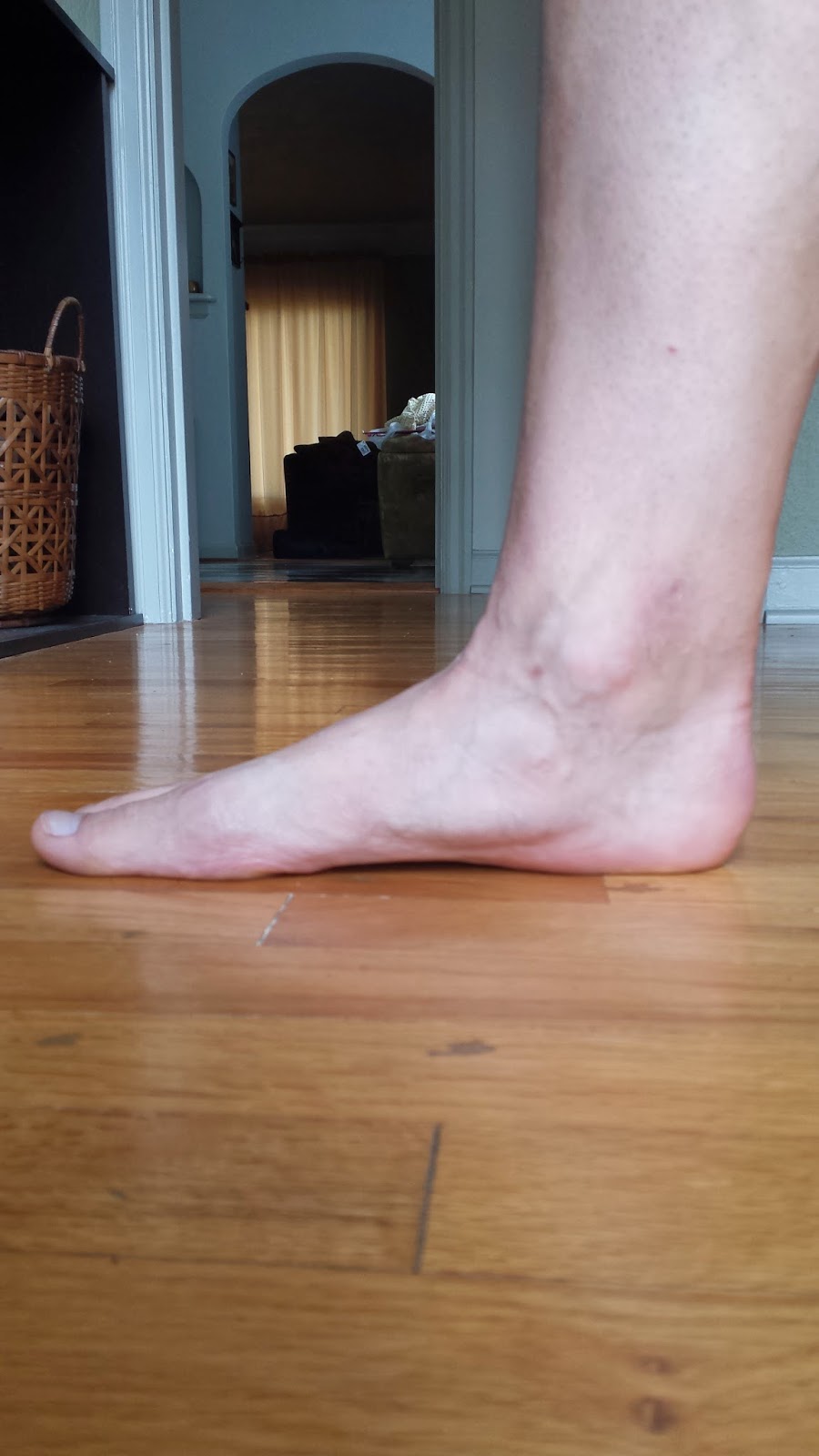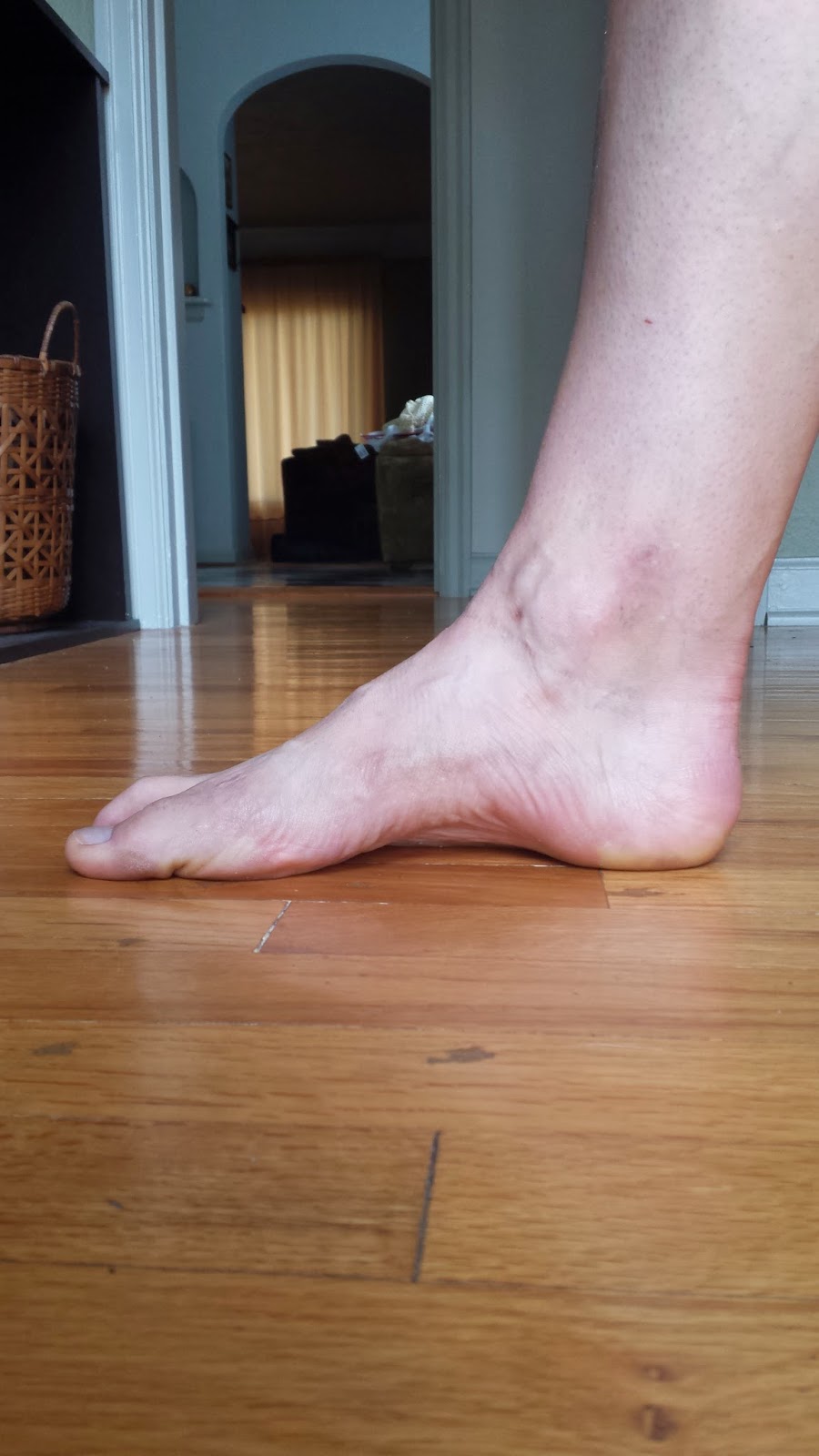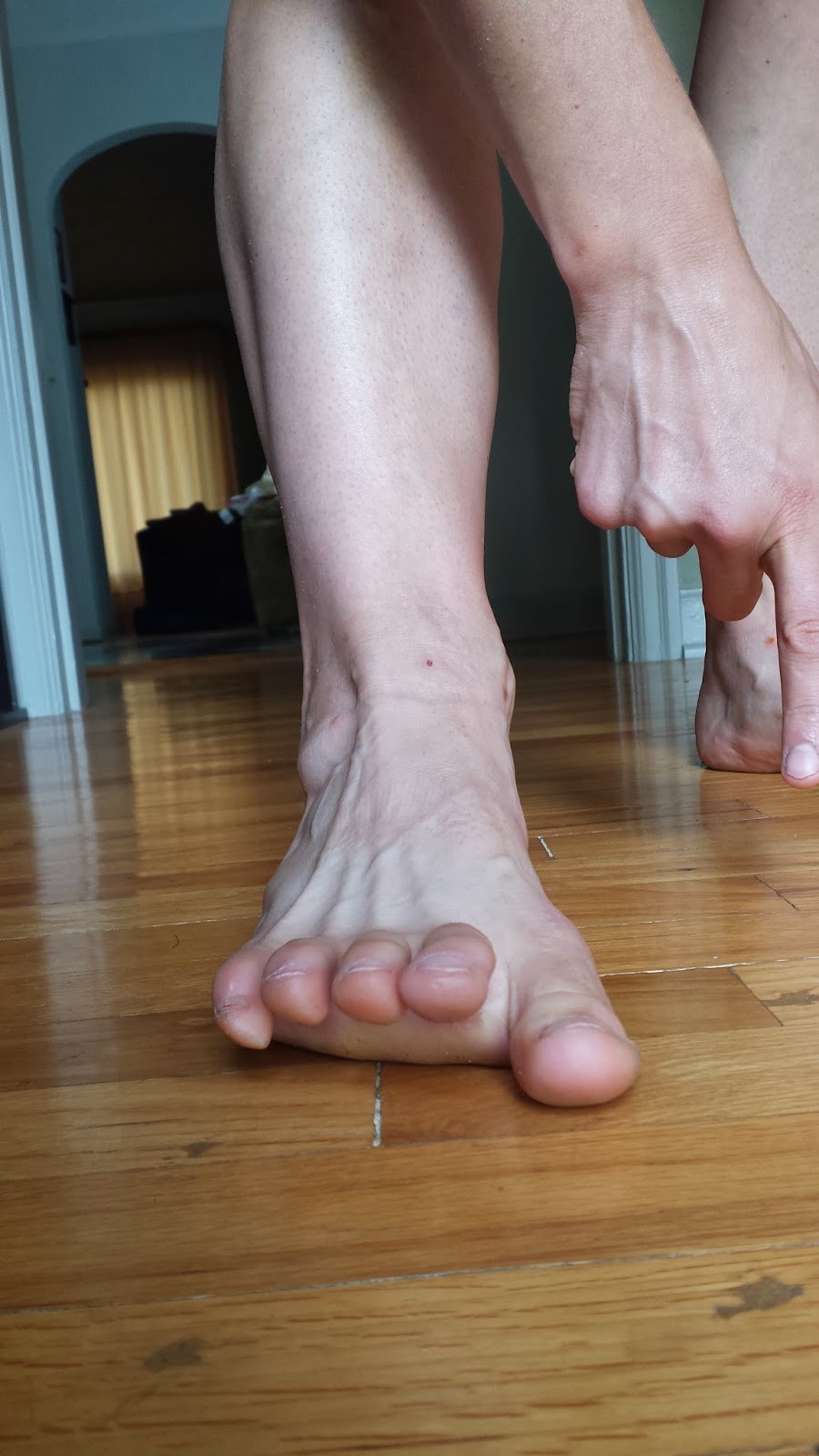More Feet (part 2)
Can you have one flat (pronated) foot and one regular foot? Absolutely. For a variety of reasons. Personally, I always lean on my right foot, and I blew out my left knee which meant I had several YEARS of training that right foot to do most of the work. Because of this, my right foot is flatter and wider than my left.
 |
| Flat footed. Relaxed. |
 |
| That same foot arched. Toes gripping and weight shifted to the outside edge of foot. |
Teaching ‘gripping through your toes’ has been challenging, as most people want to ball their toes under like a fist. Dr. Andreo Spina posted a wonderful exercise emphasizing the distinction between the big toe and the other guys. They are meant to move independently of one another.
 Drive the four toes down while you lift the big toe up. You can try this sitting at first if weight bearing proves too difficult. And for heaven sakes, if at all possible, get out of your shoes and do this in bare feet.
Drive the four toes down while you lift the big toe up. You can try this sitting at first if weight bearing proves too difficult. And for heaven sakes, if at all possible, get out of your shoes and do this in bare feet.
The opposite movement on the right proved especially difficult for me. Driving the big toe down and lifting the four toes up was so difficult I had to help the big guy stay down with my finger while I raised the other four. One I found it, I took my finger off. It is not cheating to help teach the body where it can go.
You will probably feel a bit of an arch cramp when doing this. That is OK. It is your brain trying to tell your muscles to do this when there is an impedance of habit in the way. You could also lay a towel on the ground and scrunch it up with your toes, but I like this standing version better. I can’t imagine when I’d need to pull something toward me with my feet but I can translate standing and foot positioning into a useful context.
Finally, the new-old standard for mobilizing that arch is rolling the foot on a tennis ball.
- Foot arches are important and can be trained
- The feet should spread, grip, and drive movement through the ground
- Attempt to have three points of contact when lifting or stabilizing when standing
- Roll feet regularly, move the big and little toes independently of one another, and practice single leg stances (both eyes open and closed) to get feet more receptive to proper positioning





